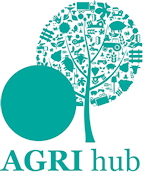 Tighter margins and price fluctuations mean crop profitability is more important than ever. Cereals is a hot spot for the latest crop innovations and this year’s event has a multitude of new variety launches in store for visitors.
Tighter margins and price fluctuations mean crop profitability is more important than ever. Cereals is a hot spot for the latest crop innovations and this year’s event has a multitude of new variety launches in store for visitors.
Whether growers are looking to boost returns by including specialist crops, or wanting to learn about the latest additions to the Recommended List, Cereals (14-15 June) has it all. A wide range of seed producers will display a range of crops and varieties including winter and spring wheats, oilseed rape, triticale, peas, sugar beet and potatoes.
Here’s a look at just some of what visitors can expect at this year’s event.
Wheat
Syngenta’s crop plots will include two new wheat varieties including hard winter feed wheat, Shabras, and soft winter feed wheat, Savello. Offering a high yield, robust disease resistance and early maturing, Shabras is making its mark in the new winter wheat varieties plot, says Sygenta’s Kat Allen. Meanwhile, Savello will provide a new soft wheat option for growers in the North and has been accepted for distilling, she adds.
Among the crop plots, Cropco is displaying two hybrid wheat varieties. These are set to include the very early maturity new variety Hybiza as well as Hyguardo, which is the first hybrid wheat to display resistance to orange wheat blossom midge (OWBM).
The high yielding Group 1 bread-maker, KWS Zyatt, will also be making its debut at this year’s event. “Zyatt delivers impressive grain quality, all-round disease resistance and demonstrated excellent performance in the second cereal position,” says Julie Goult, KWS’s commercial manager.
Varieties KWS Jackal and KWS Luther will also feature in KWS’s crop plot, alongside winter wheat KWS Montana and spring Group 2 wheats KWS Cochise and KWS Chilham.
RAGT seeds is set to launch two new Group 4 feed wheats at this year’s event – RGT Gravity and RGT Universe. Gravity is a hard wheat offering a complete package, yielding highest in both NL1 and NL2 trials. Similarly, in trials Universe came out on top for yield in the soft wheat category and is suitable for early drilling.
Offering OWBM and eyespot resistance, Limagrain’s LG Sundance will be showcased at Cereals. This latest variety has the highest Septoria resistance available on the Recommended List (7.3) and will be featured alongside high-yielding LG Motown.
Barley
With a strong track record of breeding high-yielding hybrid barleys, Syngenta will be demonstrating two new Hyvido winter feed hybrids at the event – Sunningdale and Belmont.
Hyvido Sunningdale is a new entrant on the 2017 AHDB Recommended List – with treated outputs on par with the current top-yielding hybrid on the list; Hyvido Bazooka. Sunningdale particularly excels in providing a huge step forward for the North, explains Mark Bullen at Syngenta. “It’s also slightly earlier maturing than Bazooka, which is another useful benefit for growers in Scotland and Northern England.”
KWS’s crop plot will include two new winter barley varieties – KWS Funky and KWS Orwell. “Funky is a six-row feed barley which, at 107% of controls, it’s almost comparable with the hybrids,” says KWS’s Julie Goult. “However, it offers slightly stronger all-round disease resistance.”
KWS Orwell is the highest yielding two-row variety across all UK regions. This is also the stiffest strawed two-row variety and boasts early maturity and solid resistance to net blotch. Spring malting barley KWS Sassy will also be available for growers to view.
RAGT Seeds is also showcasing a two-row spring barley. RGT Asteroid is an RL candidate non-GN barley that is on course to be all-rounder and is particularly well suited to the Scottish distilling market.
Limagrain’s newcomer, LG Opera, will be on display at Cereals, containing the genetic trait of non-GN, which is appealing in malting barleys.
Oilseed rape (including Knowledge Trail)
With ex-farm prices rising around 40% in the past year, oilseed rape has been put firmly on the map for autumn 2017. However, with the same pressures from flea beetles and the neonicotinoid bans as last year – variety choice is crucial.
At Cereals 2017 finding information on OSR will be even easier with a dedicated Knowledge Trail. Visitor can download shortly before the event or pick up a map onsite and easily find the exhibitors with varieties and information
On the trail will be Bayer’s latest hybrids, InVigor 1035 and InVigor 1010. “InV1035 has outstanding autumn vigour,” explains Bayer’s Sarah Middleton. “It also has an excellent agronomic package (Phoma 8, LLS 7, lodging 8, stem stiffness 8), and pod shatter tolerance to protect yields and ease harvest management.”
Monsanto will be showcasing two mainstream winter oilseed rape varieties, DK Expedient and DK Expansion, and two specialist varieties – DK Pliny and DK Impressario. All four varieties carry traits of vigorous establishment, double phoma resistance and pod shatter resistance, to reduce risks and increase the flexibility of OSR production. Monsanto will also be demonstrating its Dekalb variety, DK Pliny, a clubroot resistant variety.
RGT Zeland is the latest winter oilseed rape from RAGT Seeds and will be debuted at Cereals. Solid disease resistance, early flowering and maturity are just some of the traits this variety boasts, supported by gross outputs of 107% in the UK.
KWS will be presenting OSR candidates Butterfly and Django which have performed strongly across all UK regions. The new additions to KWS’s armoury boast solid light leaf spot and stem canker resistance, and are stiff-strawed.
Other exhibitors on the OSR Knowledge Trail are:
- AHDB
- NIAB
- Elsoms
- Limagrain
- DSV
- Bristows
Specialist crops
As input prices soar and grain prices fluctuate, farmers’ margins are squeezed but including specialist crops in a rotation can really help add value.
Premium Crops will be displaying at this year’s Cereals event. “Among our crops this year will be High Erucic Acid Rapeseed,” says Nigel Padbury, marketing manager. “This offers a £35/t premium over conventional rapeseed.”
Offering more than just added value, specialist crops can also have an agronomic advantage explains Mr Padbury. “Linseed attracts attention due to its ability to tackle blackgrass as well as minimising slug levels,” he adds. “Growers should re-think their rotations and use specialist crops to confront these issues.”
Harper Adams university is giving a forgotten crop a new chance to shake-up the health markets. Containing the beta glucan soluble fibre known for controlling cholesterol, crop production lecturer, Edward Dickin, believes there’s a naked barley gap in the market. “Not much barley is currently used in the food industry, but due to naked barley’s structure, the wholegrain can be used without processing,” he explains.
Following another health trend, the British Quinoa Company will be talking about the benefits of growing quinoa at this year’s event. “As well as being a fantastic break crop, quinoa has seen a huge increase in demand due to its nutritious properties,” says Stephen Jones, director of the British Quinoa Company. “It’s a healthy, wholegrain product – deemed healthier than rice or couscous.”
Visitors will also be able to meet representatives from Soya UK – the largest seed crop supplier in Soya and Lupin seed.
Crop Protection
Alongside agronomically strong variety choices, solid crop protection methods help growers to get the best out of their crops, however, with so many pesticides and herbicides on the market it’s often easy to lose track of the best available products.
Syngenta will be showcasing its cutting edge new product – ELATUS™ ERA. This new SDHI fungicide provides control against a broad spectrum of diseases, including brown rust, ramularia and fusarium.
“Registered for use on wheat, barley and rye at a maximum rate of 1l/ha, ELATUS™ ERA is able to consistently deliver increased yields due to its ability to enhance green leaf area,” says Jason Tatnell, technical indication expert at Syngenta.
Brand-new cereal herbicide, Zypar, is set to be debuted by Dow AgroSciences at this year’s event. Promising robust control of broad-leaved weeds in both the autumn and spring, Zypar works well in cold and variable conditions, says Dow’s cereal herbicide product manager, Alex Nichols.
Utilising new-generation SDHI technology, Syngenta will be revealing its new cereal seed treatment – Vibrance Duo. Combining the SDHI active ingredient, sedaxane, with a second active ingredient, fludioxonil, Vibrance Duo gives growers outstanding disease control and also visible improvements in root growth, explains Syngenta’s Mark Bullen.
Agro-Vital (UK) will be displaying its range of enhanced efficiency fertilisers designed to reduce environmental losses and improve yield and quality. Focus this year will be on Efficie-N-t 28 – a slow release foliar nitrogen fertiliser. Using urea polymers of variable lengths, results in a phased release of nitrogen over a total of 6-8 weeks. Using this in a trial programme has shown improvements across the board, from yield, to Hagberg levels.
In the ever-popular black-grass area, visitors will be able to talk through all aspects of control programmes from cultural management, such as spring cropping and delayed drilling to new chemical options, including Hamlet (iodosulfuron + mesosulfuron + diflufenican), Monolith (mesosulfuron + propoxycarbazone) and a new pre-emergence black-grass herbicide.


